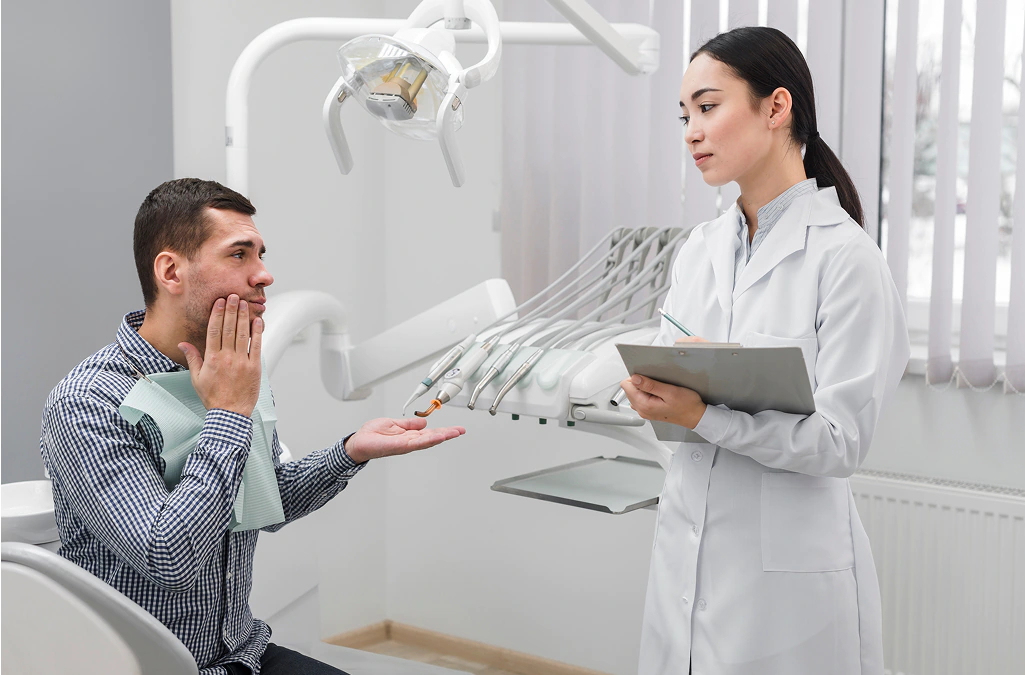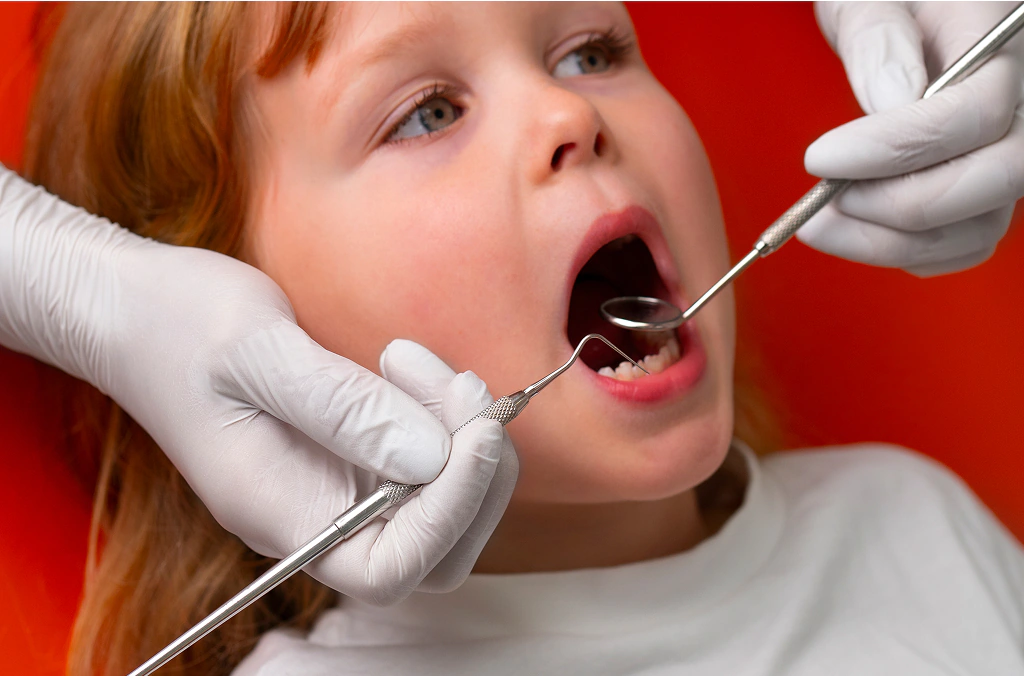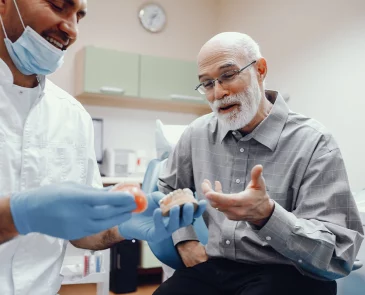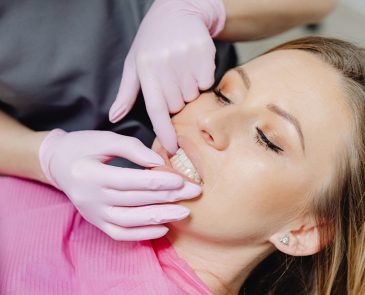Here’s why you shouldn’t ignore tooth decay!
If you are worried about tooth decay and want to ensure your oral health is perfect, you have come to the right page! Our blog post tells you everything you need to know about tooth decay, right from what it is, what causes tooth decay, how to prevent tooth decay and where to find expert tooth decay treatment in Craigieburn.

Tooth decay can affect anyone regardless of age. Whether it is a tiny cavity or a deep-running tooth decay, it cannot be ignored, because tooth decay can lead to serious dental complications such as rotten teeth, tooth aches and even tooth loss. Also, tooth decay if left unchecked, can, in very rare cases, result in potentially fatal conditions such as bacteremia, sepsis and endocarditis. So, make sure you watch out for any sign of tooth decay no matter how small, and pay a visit to your trusted dentist to get it checked and treated. These signs often include sensitivity, discolouration, or tooth chipping and breakage. Let’s now learn more about tooth decay and how to prevent it.
What is Tooth Decay?

Tooth decay is also called dental caries and are more commonly known as tooth cavities, though a cavity in the tooth is actually a result of the tooth decaying. Tooth decay is basically damage to the structure of the teeth. Our teeth have a protective hard layer of enamel around them. Tooth decay happens when the bacteria in your mouth produces an acid that wears down the teeth enamel. Over time, if untreated, decay can penetrate deeper into the tooth, affecting nerves and potentially leading to infection as discussed earlier.
Now, let’s discuss what causes tooth decay.

Tooth decay is primarily caused by bacteria. Usually, it is Streptococcus mutans, a type of bacteria that thrive on the sugar and starches left on your teeth, when the food you consume isn’t cleared properly from your mouth. These bacteria produce acid that demineralises the hard protective covering of your teeth, the enamel. When the enamel wears down, your teeth start to decay.
There are quite a few reasons for tooth decay. Let’s explore them, one by one.
1. Poor Oral Hygiene
One of the most common reasons for tooth decay is not maintaining good oral hygiene. Skipping brushing and flossing is a strict no-no, as it allows plaque to build up on your teeth. (For more information on plaque and how to avoid it, check out this blog) Once the plaque is formed, it further feeds on sugars and produces acids that wear away at enamel.
2. A diet that’s high on sugar
If you have a sweet tooth and frequently consume sugary snacks like desserts, colas or food that’s high in sugar, then you are more likely to get cavities. The sugar serves as a food for cavity-causing bacteria helping them thrive. You can prevent this from happening by keeping your sugar consumption in check and also, brushing your teeth or rinsing your mouth with a good mouthwash after consuming sugar.
3. Dry Mouth
Did you know that the saliva inside your mouth plays a very important role in helping maintain oral hygiene? The saliva helps neutralise acids inside your mouth and also works to wash away food particles. A dry mouth prevents this from happening, again, serving as a breeding ground for the cavity-causing bacteria. While the causes for dry mouth may be different, most common causes include not drinking enough water, medications whose side effects cause dry mouth and smoking or tobacco use. Smoking and tobacco use cause a drastic reduction in saliva production resulting in dry mouth which forms a conducive environment for the tooth cavity causing bacteria to grow.
4. Tooth Position & Shape
This is one factor you have no control over. The alignment of your teeth can make you more prone to tooth decay. If you have crooked or crowded teeth, it can be much harder to keep them clean. Plaque may accumulate in areas within your mouth that are harder to reach and clean during your usual brushing and flossing routine.
5. Lack of Regular Dental Check-ups
Regular dental check ups help you catch the early signs of tooth decay, so you can fix it before it progresses to cause more harm. Ideally, you should get your teeth checked every six months to ensure there’s no tooth decay and your dental health is at its best.
Tooth Decay in Children

Tooth Decay is a significant problem among children because usually, kids consume a high-sugar diet. Think colas, candies and high-carb food. They have inconsistent brushing habits. They may have not perfected the art of brushing properly.
Parents should ensure kids have regular dental check ups so that any early sign of tooth decay can be identified and treated before it becomes a full blown problem.
Tooth Decay Symptoms to Watch Out For
Let’s now take a look at some of the symptoms of tooth decay
- Tooth sensitivity to hot, cold, or sweet foods: Do you feel a buzzing sensation or a discomfort when you consume hot, cold or sweet food items? If so, it could be a sign of tooth decay.
- Discolouration or dark spots: If you notice discolouration or dark spots in your tooth, it could be indicative of tooth decay.
- Persistent bad breath: While there may be many other reasons for bad breath, tooth decay also results in bad breath that’s persistent.
- Small holes or pits in your teeth: If you feel tiny holes or pits on your teeth when you move your tongue along your teeth’s surface, you could be looking at one of the earliest signs of tooth decay.
- Discomfort while chewing: Does it hurt when you bite into food? Is there a dull ache when you bite into something hard? Pain of this kind is often a sign that there’s tooth decay and it has penetrated to the deeper layers of your tooth.
- Gum swelling or abscess: Tooth decay also causes gum swelling and abscess. So, if you experience them, it might be a good idea to schedule a dental check up to rule out tooth decay.
If you notice any of the above mentioned symptoms, book an appointment with a trusted dentist at the earliest to get checked for tooth decay. Timely identification and correction of tooth decay can help prevent it from escalating into something more complicated and also, in some cases, help reverse the tooth decay.
The different stages of Tooth Decay & Treatment Options
- Early Demineralisation: This is the very first stage of tooth decay. At this stage the enamel is only slightly coming off. At this stage, it is possible to completely reverse the tooth decay with fluoride application and practicing improved oral hygiene.
- Enamel Decay: Enamel decay is the second stage of tooth decay where the protective enamel has started to erode and decay. At this stage, it is still possible to treat it with small fillings.
- Dentin Decay: The third stage is called dentin decay, where you would need larger fillings or inlays to fix the damage done due to the tooth decay.
- Pulp Damage & Infection: The fourth stage of tooth decay is the pulp damage and infection stage, where the only treatment is a root canal.
- Severe Breakdown or Rotten Teeth: The fifth and final stage of tooth decay is where the tooth is rotten or has a severe breakdown, meaning, it pretty much starts to crumble. The treatment at this stage varies depending on the extent of damage. Options include tooth extraction, crowns or dental implants.
How much does Tooth Decay Treatment Cost in Craigieburn?
Well, the tooth decay treatment cost depends largely on the extent of damage, i.e. the stage of tooth decay. As discussed earlier, tooth decay treatment varies depending on the stage of tooth decay. So, the tooth decay treatment cost also varies accordingly. Tooth decay treatment cost can vary anywhere between $150 to $1200, depending on the line of treatment to be followed.
As you can see, tooth decay treatment costs can run as high as $1200. So, it makes sense to check if your dental insurance covers the treatment before you pay for it out-of-pocket. For tips on how to choose the right dental insurance plan, check out this blog.
Tooth Decay Prevention Tips
As we all know, prevention is better than cure, and in the case of tooth decay, in fact, prevention is easier than cure! There are a few simple habits that you can form which can help you prevent tooth decay.
These habits are just good oral hygiene and dental practices such as brushing twice a day with a fluoride toothpaste, flossing once a day (preferably at night) to remove any possible plaque buildup in the gap between your teeth, using a mouthwash with antibacterial properties to rinse your mouth after food, limiting intake of high-sugar food items like candies, chocolates, colas, etc, avoiding smoking and tobacco and of course, drinking plenty of water and staying hydrated, as it helps prevent dry mouth, which is a breeding ground for the bacteria that cause tooth decay. You could also consider switching to electric toothbrushes with timers, as they ensure you are brushing enough and also help you clean the hard-to-reach areas better. Similarly, if you are not comfortable with the traditional floss, you can switch to interdental brushes, which typically offer the same benefits as flossing, but are easier to use.
Frequently Asked Questions (FAQs)
1. What causes tooth decay ?
Sugary foods, poor oral hygiene, smoking and use of tobacco are among the leading causes of tooth decay.
2. Can tooth decay be reversed?
If caught early during the demineralisation stage, i.e. the very first stage of tooth decay, it can be reversed with fluoride treatments and practicing improved oral hygiene.
3. Does tooth decay smell?
Sometimes, decaying teeth emit a foul odour . This odour is a result of bacterial buildup and infection. So, if you notice bad breath that won’t go away, have your dentist take a look at you for tooth decay.
4. How long does it take for tooth decay to form?
Typically tooth decay begins within a few weeks after the plaque build up starts.
5. Can tooth decay spread to other teeth?
Unfortunately, yes. The bacteria that cause decay can spread, affecting nearby teeth and gums if not detected and treated on time.
Tooth Decay Treatment in Craigieburn
Our Craigieburn dental clinic provides comprehensive solutions-from early-stage fluoride treatments to advanced root canal therapy and extractions. If your tooth decay has progressed, don’t panic. Many patients come in with concerns like “my teeth are rotting and breaking,” and we’re able to restore both function and confidence with modern dentistry.
We’ll assess your oral health and recommend a personalised plan. And if you’re worried about costs, we’re happy to discuss payment plans and accept most health insurance extras that cover dental.
Looking for a trusted dental clinic in Craigieburn for your Tooth Decay Treatment? Your search ends with Dazzling Smiles Dental!
We know tooth decay is bad news, but the good news is, it’s entirely treatable and preventable. Whether you’re in the early stages or dealing with advanced decay, our friendly and experienced team at our Craigieburn dental clinic is here to help.
Call us now on 03-8339-4253 or visit https://dazzlingsmilesdental.com.au/contact-us/ or email us at dazzlingsmilesmel@gmail.com to book your appointment.
We are located at –
Shop D00-29a, Craigieburn Central Shopping Centre, 340 Craigieburn Rd.
Craigieburn 3064
Let us help you restore your smile, your confidence, and your peace of mind.





